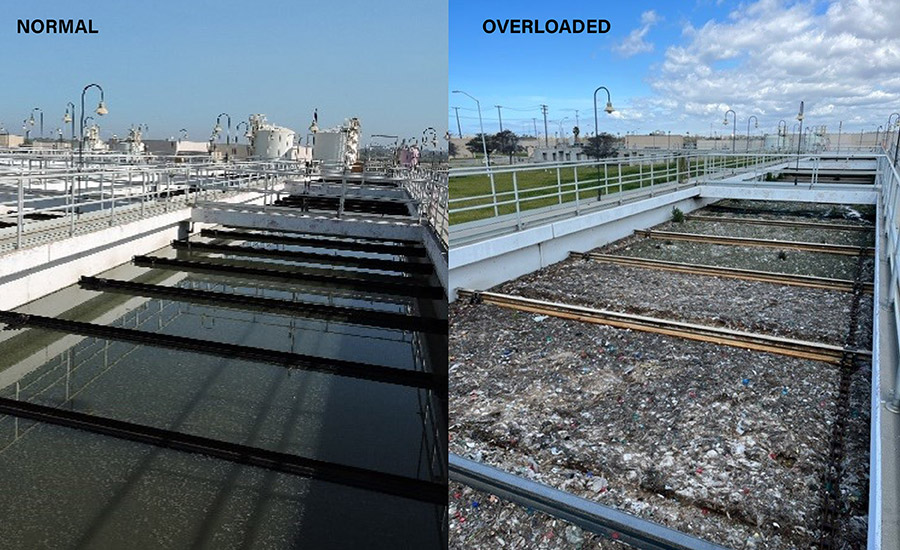Water Quality
San Diego Wastewater Plant Damaged By Tropical Storm Hilary Needs $8M in Repairs

The South Bay International Wastewater Treatment Plant is in need of repairs after experiencing excess flows from Tropical Storm Hilary last month.
Photos courtesy of U.S. Section of the International Boundary and Water Commission
Repairs for a critical wastewater treatment plant near the U.S.-Mexico border are needed following damage caused by Tropical Storm Hilary that surged through Southern California and northern Mexico last month. The agency that operates the plant is preparing to undertake $8 million in repairs, in addition to previously planned projects estimated to cost hundreds of millions more to prevent untreated wastewater from polluting the U.S. side of the Tijuana River valley and nearby beaches.
The South Bay International Wastewater Treatment Plant in San Diego treats wastewater coming from Tijuana, Mexico, and discharges it to the Pacific Ocean. It was designed to provide secondary treatment of 25-million-gallon per day (mgd) average daily flows. But heavy rainfall from Hilary caused flows exceeding its capacity by 100% for six hours, and by 320% for another six hours between Aug. 20 and 21, according to the U.S. Section of the International Boundary and Water Commission (USIBWC), which operates the plant.
Those excess flows flooded the plant’s headworks, damaging pumps and electrical systems, Maria-Elena Giner, the USIBWC commissioner, said during a Sept. 13 San Diego Regional Water Quality Control Board meeting. Trash, sediment and debris also impacted the plant.
“Tropical Storm Hilary exacerbated the vulnerabilities of an already at-risk treatment plant, accelerating damage through excessive flows and incoming debris,” Giner said in a statement.

Heavy rain events can overwhelm the Primary Sedimentation tanks at the South Bay International Wastewater Treatment Plant.
Photo courtesy courtesy of U.S. Section of the International Boundary and Water Commission
USIBWC developed a recovery plan to repair the damage from the tropical storm. Emergency pump and electrical repairs are needed at the headworks. The plan also calls for replacements of six influent pumps—two had previously been ordered to arrive next month anyway—plus replacement of 11 inoperable pumps throughout the facility and rehabilitation of other pumps and piping at the plant and at nearby Hollister Pump Station, which recently shut down when all of its pumps became inoperable. USIBWC is redirecting money from salaries, expenses and construction budgets to pay for the work.
The agency plants to go out to bid for the work in the next 60-90 days, a spokesperson says. The work is expected to take between nine months and one year.
Even before Hilary, $10 million in other work had been planned at the plant to address excess flows at the plant. Through August, monthly average effluent flows to the plant exceeded its 25 mgd capacity in all but two months, according to USIBWC. Work including a junction box replacement, rehabilitation of sedimentation tank mechanical parts and cleaning of the tanks is expected to achieve incremental improvements. On the Mexico side, a project to replace a 42-in. wastewater line is also expected to complete in November.
USIBWC is also preparing to solicit bids for other planned plant rehabilitation and expansion work designed to reduce transboundary flows by 90%, expand the South Bay plant’s capacity to 50 mgd and make it temporarily capable of handling flows of up to 75 mgd when needed.
Officials estimated the cost at $627 million last year, but now say the work may cost more than $910 million. USIBWC is planning to solicit the work in phases based on its available funding. The U.S. Environmental Protection Agency has committed $300 million for the project.


